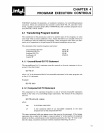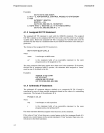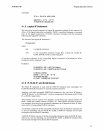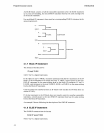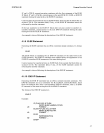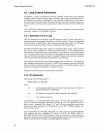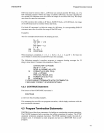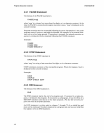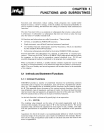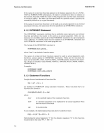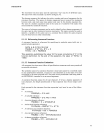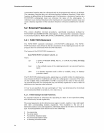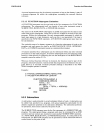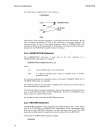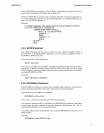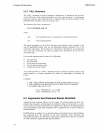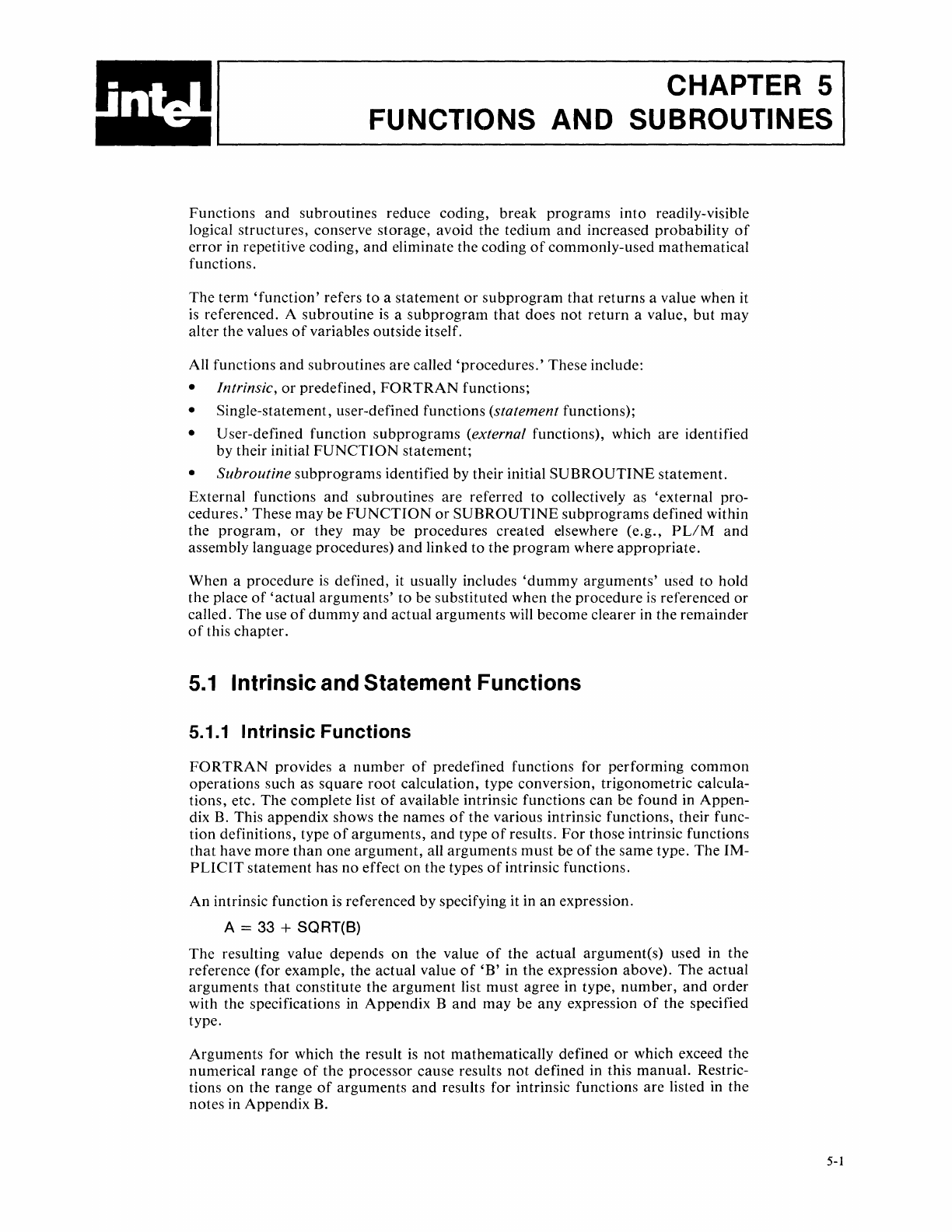
CHAPTER 5
FUNCTIONS AND SUBROUTINES
Functions
and
subroutines reduce coding, break programs into readily-visible
logical structures, conserve storage, avoid the tedium
and
increased probability
of
error
in repetitive coding, and eliminate the coding
of
commonly-used mathematical
functions.
The term
'function'
refers
to
a statement
or
subprogram
that
returns a value when it
is
referenced. A subroutine
is
a
subprogram
that
does not return a value, but may
alter the values
of
variables outside itself.
All functions
and
subroutines are called
'procedures.'
These include:
• Intrinsic,
or
predefined,
FORTRAN
functions;
• Single-statement, user-defined functions (statement functions);
• User-defined function
subprograms
(external functions), which are identified
by their initial
FUNCTION
statement;
• Subroutine subprograms identified by their initial
SUBROUTINE
statement.
External functions
and
subroutines are referred to collectively as 'external pro-
cedures.' These may be
FUNCTION
or
SUBROUTINE
subprograms
defined within
the
program,
or
they may be procedures created elsewhere (e.g.,
PL/M
and
assembly language procedures)
and
linked to the
program
where
appropriate.
When a procedure
is
defined, it usually includes
'dummy
arguments'
used to hold
the place
of
'actual
arguments' to be substituted when the procedure
is
referenced
or
called. The use
of
dummy
and
actual arguments will become clearer in the remainder
of
this chapter.
5.1
Intrinsic and Statement Functions
5.1.1
Intrinsic Functions
FORTRAN
provides a
number
of
predefined functions for performing
common
operations such as square
root
calculation, type conversion, trigonometric calcula-
tions, etc. The complete list
of
available intrinsic functions can be
found
in Appen-
dix
B.
This appendix shows the names
of
the various intrinsic functions, their func-
tion definitions, type
of
arguments,
and
type
of
results.
For
those intrinsic functions
that
have
more
than
one argument, all arguments must be
of
the same type. The IM-
PLICIT
statement has no effect
on
the types
of
intrinsic functions.
An
intrinsic function
is
referenced by specifying it in an expression.
A = 33 + SQRT(8)
The
resulting value depends on the value
of
the actual argument(s) used in the
reference (for example, the actual value
of
'B'
in the expression above). The actual
arguments
that
constitute the
argument
list must agree in type, number,
and
order
with the specifications in Appendix B and may be any expression
of
the specified
type.
Arguments for which the result
is
not mathematically defined
or
which exceed the
numerical range
of
the processor cause results
not
defined in this manual. Restric-
tions on the range
of
arguments
and
results for intrinsic functions are listed in the
notes in Appendix
B.
5-1



